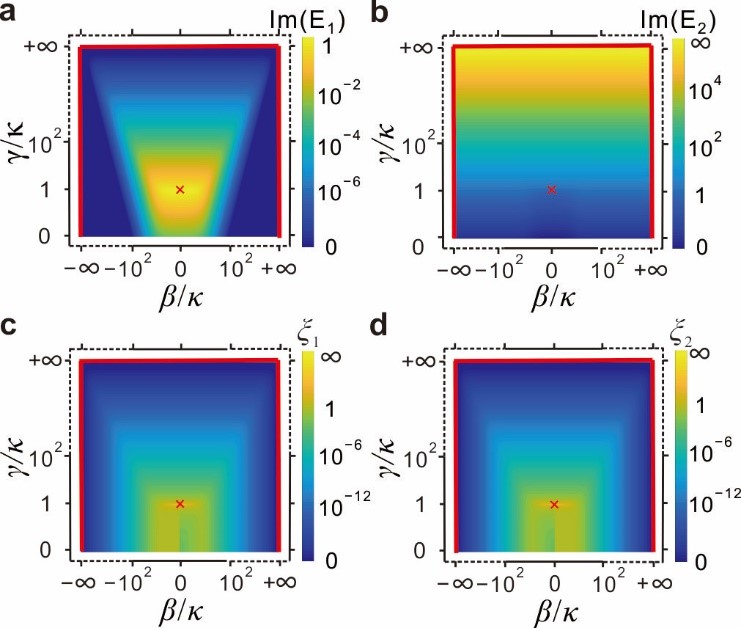On April 19th, Prof. Jian Wang and Prof. Lin Chen from Wuhan National Laboratory for Optoelectronics, Huazhong University of Science and Technology, Prof. Andrea Alù from City University of New York published new advances in Nature Communication . The paper is entitled “Fast Encirclement of an Exceptional Point for Highly Efficient and Compact Chiral Mode Converters”.
In non-Hermitian systems obeying parity-time symmetry, the eigenvalues and eigenstates simultaneously coalesce at exceptional points (EPs). Owning to the tailored gain and loss, photonic systems are ideal platforms to study physics behind EPs. Recent works have demonstrated that strong directional response and chiral state evolution can arise owing to non-adiabatic transitions when EPs are dynamically encircled. Chiral mode switching has been theoretically and experimentally verified by mapping the Hamiltonian parameters onto structural parameters of coupled waveguides, in which encircling EPs in clockwise or anticlockwise direction leads to different output modes. In particular, the final output modes are the same for a specific encircling handedness even if the input modes are different. For conventional chiral mode converters realized based on these principles, the chiral transmission efficiencies are quite low owing to significant energy dissipation near EPs, with the maximum efficiency experimentally reported so far being 46%. Besides, previous studies from the authors have demonstrated the ability to realize high-efficiency chiral mode transmission by using a discontinuous encircling protocol via Hamiltonian hopping. The designed chiral mode converters based on such a discontinuous encircling loop suffer from additional mode crosstalk, resulting in deterioration of the mode purity (Physical Review Letters 125 (18), 187403 (2020)).
Here, the authors show the feathers of eigenvalues and eigenstates in Hamiltonian parameter space (Fig. 1), and find that slow parametric evolution is not necessary in non-Hermitian dynamics, i.e. fast parametric evolution along parameter space boundary satisfies adiabaticity. At the same time, along this path one of the two eigenstates undergoes extremely low energy dissipation rates. So, when the encircling loop includes the parameter space boundary, efficient asymmetric transmission is expectable (Fig. 2).
The chiral transmission behavior is theoretically predicted and experimentally demonstrated by mapping the required Hamiltonian parameters onto double-coupled silicon waveguides of 57 μm length, in which near-unity efficiency is achieved with −16 dB crosstalk at 1550 nm (Fig. 3, Fig. 4).
This work is supported by National Natural Science Foundation of China, National Key R&D Program of China, State Key Laboratory of Artificial Microstructure & Mesoscopic Physics (Peking University), State Key Laboratory of Advanced Technology for Materials Synthesis and Processing (Wuhan University of Technology). This paper is jointly collaborated with Xiaoqian Shu, Dr. Aodong Li, Prof. Jian Wang, Prof. Lin Chen from Wuhan National Laboratory for Optoelectronics, Huazhong University of Science and Technology, Dr. Guangwei Hu from National University of Singapore, and Prof. Andrea Alù from City University of New York.

Fig.1 Loss (a, b) and variation (c, d) rates of eigenstates in the Hamiltonian parameter space

Fig. 2 Encircling an EP along Hamiltonian parameter space boundary on the Riemann surfaces

Fig. 3. (a) Double-coupled silicon waveguides on SOI wafer, (b, c) Simulated field distributions in opposite directions

Fig. 4 (a) SEM of the device, (b, c) Transmittance spectra for output modes in simulation and experiment
Paper link:
https://www.nature.com/articles/s41467-022-29777-5
Source:Wuhan National Laboratory for Optoelectronics
Edited by:Gou Bingbing, Jiang Jing
